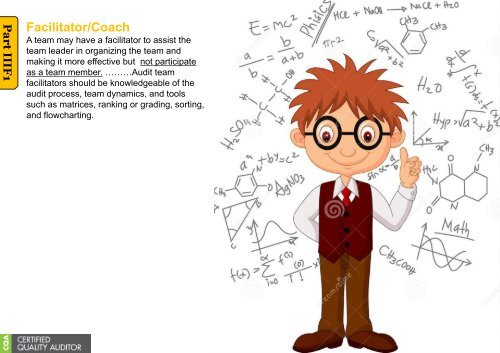My Reading on ASQ CQA HB Part III
Create successful ePaper yourself
Turn your PDF publications into a flip-book with our unique Google optimized e-Paper software.
<strong>Part</strong> <strong>III</strong>D<br />
In initial meetings, the lead auditor has much work to do to establish effective communicati<strong>on</strong>. Communicati<strong>on</strong><br />
techniques that may be used during the preaudit phase include:<br />
• Building rapport by exchanging small talk, perhaps over a cup of coffee.<br />
• Establishing trust by ensuring c<strong>on</strong>fidentiality.<br />
• Showing empathy for the disrupti<strong>on</strong>s that will be inevitable and assuring the auditee that distracti<strong>on</strong>s will be<br />
kept to a minimum.<br />
• Dem<strong>on</strong>strating professi<strong>on</strong>alism and working hard to be organized.<br />
• Explaining the process by reviewing the audit plan and showing how the auditee will be kept informed.<br />
• Ensuring that the auditee buys in. The auditor should ask: Does this seem reas<strong>on</strong>able? Do you recommend<br />
any changes to make the process run more smoothly?<br />
• Maintaining flexibility by c<strong>on</strong>sidering all opti<strong>on</strong>s, yet never relinquishing authority to c<strong>on</strong>duct the audit (be<br />
firm but flexible).<br />
Charlie Ch<strong>on</strong>g/ Fi<strong>on</strong> Zhang

















